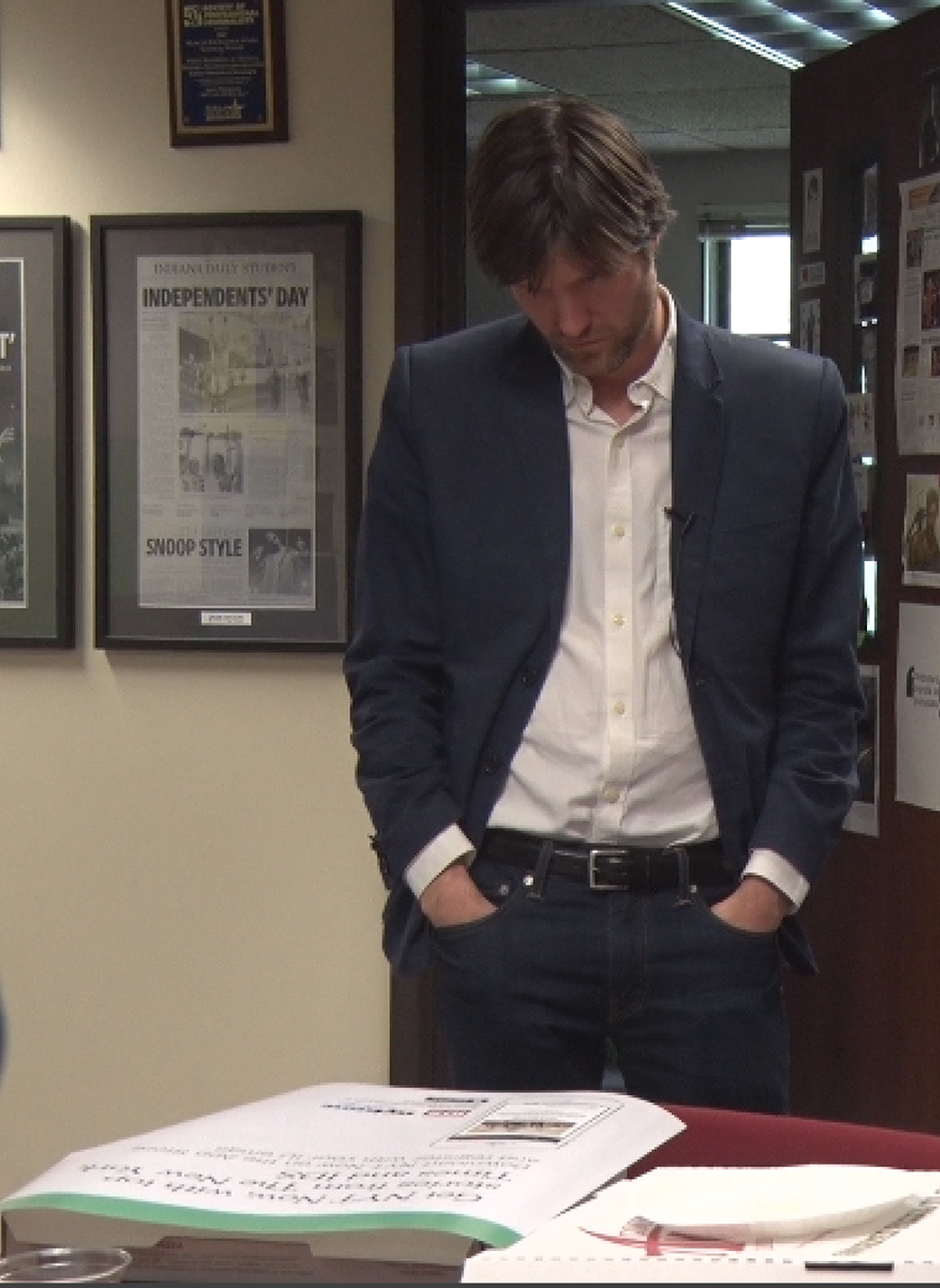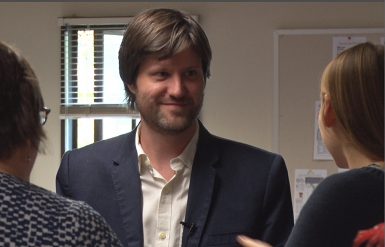Indiana Daily Student collaborates with NYT Now project

Student journalists at the Indiana Daily Student are influencing the development of a recently released New York Times application, and a team from the NYT came to campus recently to share updates and collaborate with the IDS team.
Executive editor of new products Ben French, BAJ’98, lead editor Cliff Levy and user experience expert Elena Gianni also managed to visit journalism and telecommunications classes to both share their work with students and get students’ reactions to NYT Now, the new app geared toward mobile users.
“It’s about what happened overnight and what’s going to happen today,” Gianni told students. “Tell me about the weather, give me the most important stories, tell me about my commute, make me laugh.”
The application was released in April to target a new audience and share stories in an innovative way, Levy said. The team hopes it will become the reader’s resource of choice to catch up on news.
NYT Now is a combination of top stories from the Times and aggregated stories from other news sources. The stories are hand-picked by NYT editors and are displayed on the home page of the app, accompanied by short blurbs.
Each morning, the app displays a Daily Briefing with the news readers need to know to start their days and an evening briefing to recap the news. As stories are updated throughout the day, a blue dot appears next to each. The IDS has its own section, with its own top picks, that are viewable to those logged in with IU email addresses.
The IDS is the only student newspaper in the country with this partnership. Director of Student Media Ron Johnson said Ben French contacted him early in the summer to talk about the project. French, who was editor-in-chief of the IDS in 1997, has visited campus often since he graduated to talk with students at the IDS and in classes.
“Ben said he wanted to work with a strong staff with an open mind on the possibilities of this mobile platform, which had tested well with younger readers,” Johnson said.
Johnson and editor-in-chief Michael Majchrowicz discussed the idea.
“I decided this was too good of an opportunity to pass up,” Majchrowicz said. “This partnership has given the IDS the opportunity to reach audiences beyond our local and regional grasps.”

To put the collaboration in action, several IDS positions were dedicated to working with NYT Now. IDS digital content director Janica Kaneshiro collaborates with the NYT Now team each day to put the IDS content on the NYT application.
“Every night, I speak with the team about the top stories of the day,” said Kaneshiro, a journalism junior. “At the end of the night after the paper is posted, I send them headlines, hyperlinks and a summary of our top stories.”
Kaneshiro, Majchrowicz and other IDS staff members involved in the project met with the NYT Now team Wednesday, the first in-person meeting since the project started. They looked at analytics and discussed marketing strategies.
The NYT trio repeated their desire to learn from student feedback as they visited several telecommunications and journalism classes during the two-day visit.
“I’d like to hear what you guys like and don’t like,” Ben French said to students in J401 Words and Pictures, a class taught by his older brother, professor of practice Tom French, professor Jim Kelly and lecturer Bonnie Layton.
The students responded with suggestions on the application’s tone, usability, format, notifications and content. They had all been encouraged to download the application in advance. IU students, faculty and staff can sign up for a free subscription to NYT Now app with an indiana.edu email. Currently, the app is available only for iPhones, but the team hopes to launch an Android version soon.
There was a divided reaction about whether students liked being able to use the “save feature” of the app to flag stories to read later. Junior Samantha Schmidt said thought the app could replace Twitter as her news update between classes. Other students commented on design and usability quirks and features.
“All these factors come into play. It’s about journalism and app design, and bringing all these things together,” said Levy, a two-time Pulitzer Prize winning investigative reporter for the Times.
When sophomore Hannah Alani asked how the NYT selected stories to appear at the top of the app, Levy stood up and drew the front page of the NYT on the chalkboard.
“With NYT Now, we started to mess around with the hierarchy,” he said, explaining that what might be the top story in the print edition isn’t guaranteed to be the first story you see on the application.

Kaneshiro said she has learned about writing concise but attention-grabbing blurbs for NYT Now. Her job involves selecting the three top IDS stories each day and writing a summary that will go under the headline on the application.
“It’s been a good merger of everything I’ve learned about social media and writing headlines and news judgment,” she said. “I have to show the New York Times why these particular stories matter. These are obviously senior members of the journalism community, and I’m trying to convince them why these are our top stories.”
For example, she said, she has to explain why a story about the greek community might be more relevant to the IDS reader than a report on a small robbery in Bloomington.
Student engagement has been an asset as the NYT refines the application, the NYT Now team said.
“We’re trying to reinvent journalism in a way that targets people your age,” Ben French said to the class. “It’s been hugely helpful to hear feedback from students.”
The IDS is benefitting as well, in both training its student journalists and increasing the reach of the newspaper.
“As with any such project, we’ll evaluate the collaboration to determine its future. In the meantime, though, it’s expanded the IDS platforms in mobile and strengthened our social media even more,” Johnson said. “We’re the envy of quite a few collegiate newspapers right now, too.”

